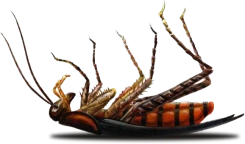A Bite to Eat: Summer Biting Insects
Summer not only brings stinging insects, but some biting ones too. There are three common biting insects to keep on your radar as you apply the insect repellant and head outdoors: mosquitoes, horseflies, and ticks.
The stealthy mosquito is a summer pest for many of our customers, and our seasonal service is an important tool in reducing their populations in your yard. You generally don’t realize you’ve been bitten until after the mosquito is gone, as they are equipped with saliva that acts as a numbing agent in concert with their surgical piercing-sucking mouthparts, which has an insertion delicacy that rivals a hypodermic needle. The blood meal takes an instant and is over, leaving behind a raised, red bump: an allergic reaction to their saliva. Only female mosquitoes have a thirst for blood, and the meal is necessary approximately every two days for the mosquito to lay her eggs. Prevention, therefore, is the best approach to pest control for mosquitoes.
Studies have tried to determine why some people are, unfortunately, “mosquito magnets.” These studies suggest that a variety of factors play into why certain people are more attractive to mosquitoes than others, ranging from skin microbiota, blood types, and carbon dioxide emissions. Even certain color clothing can increase your attractiveness to mosquitoes, with the most attractive being red, orange, black, and cyan.
Unlike mosquitoes, horseflies are brutal in their bite. Female horse flies use their sharp mouthparts to cut the skin of their prey, before lapping up their blood meal with a tongue-like mouthpart. Male horse flies do not require a blood meal to reproduce, feeding on nectar and pollen. But anyone who has encountered a female horsefly can attest that they are intensely single-minded, continuing to attack their victim until they procure an adequate blood meal. Your best strategy while under attack is to grab a flyswatter and win the fight before they can bite you. Their large size and clumsy, aggressive approach make it easier to control these pests as you spot them.
The horsefly’s aggressive, all-in approach, however, is entirely different to our last stealthy-summer biting insect – the tick. Ticks are engineered to evade notice until they have taken a lengthy blood meal, and potentially delivered a virus into your system. The mouthparts and feeding pattern of a tick is different from that of a mosquito or a horse fly. Their highly evolved mouthparts are designed not for a quick meal, but rather a long course of up to ten days if left undisturbed. A male or female tick must take a blood meal each time it progresses from larva to nymph to adult, and both males and females need blood meals to reproduce.
A tick’s mouthparts are covered in hooks designed to penetrate the surface of the skin and remain attached. The two sets of hooks resemble a hand with three fingers which bend in unison to dig and wriggle into the skin, cutting it out of the way so that the chainsaw-like hypostome can push in and extract the blood. Some biologists refer to this action as “swimming” into your body in a kind of dermatological breaststroke. The hypostome hooks anchor the tick into your skin and hold it intact for the blood meal. Insect repellant is advisable and very helpful, as is our summer seasonal mosquito and tick program, but a quick, post-outdoor self-inspection of your body is recommended to make sure these parasites haven’t attached themselves to you. There are dozens of tick species to watch out for, including the lone star tick and the American dog tick which carry the bacterium that cause Rocky Mountain spotted fever. However, the tick with the worst reputation is the deer tick (ixodes scapularis), also known as the blacklegged tick. The deer tick carries the bacterium for Lyme disease, as well as anaplasmosis and babesios.


Why Choose Us?
Providing Reliable Pest & Wildlife Solutions Since 1939
At Home Paramount Pest Control, we have been dedicated to delivering reliable pest and wildlife management solutions for over 85 years. Our long-standing presence in the industry speaks volumes about our commitment to excellence and customer satisfaction. When you trust our team, you can always count on:
- Customized solutions to suit your specific needs
- Same-day service availability for pest infestation emergencies
- High-quality green products that are safe for the environment
- Complimentary pest inspections
- Affordable financing solutions tailored to your budget
Call us at 888-888-4663 to get started with a free pest inspection for your property today!
Learn More

